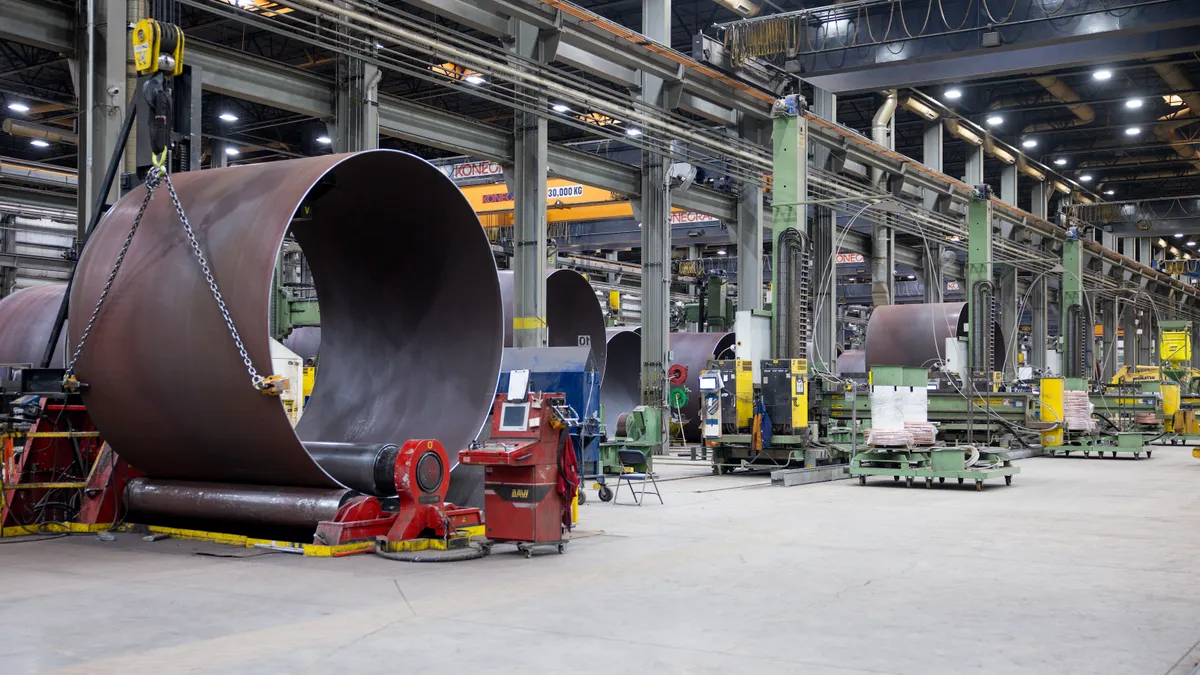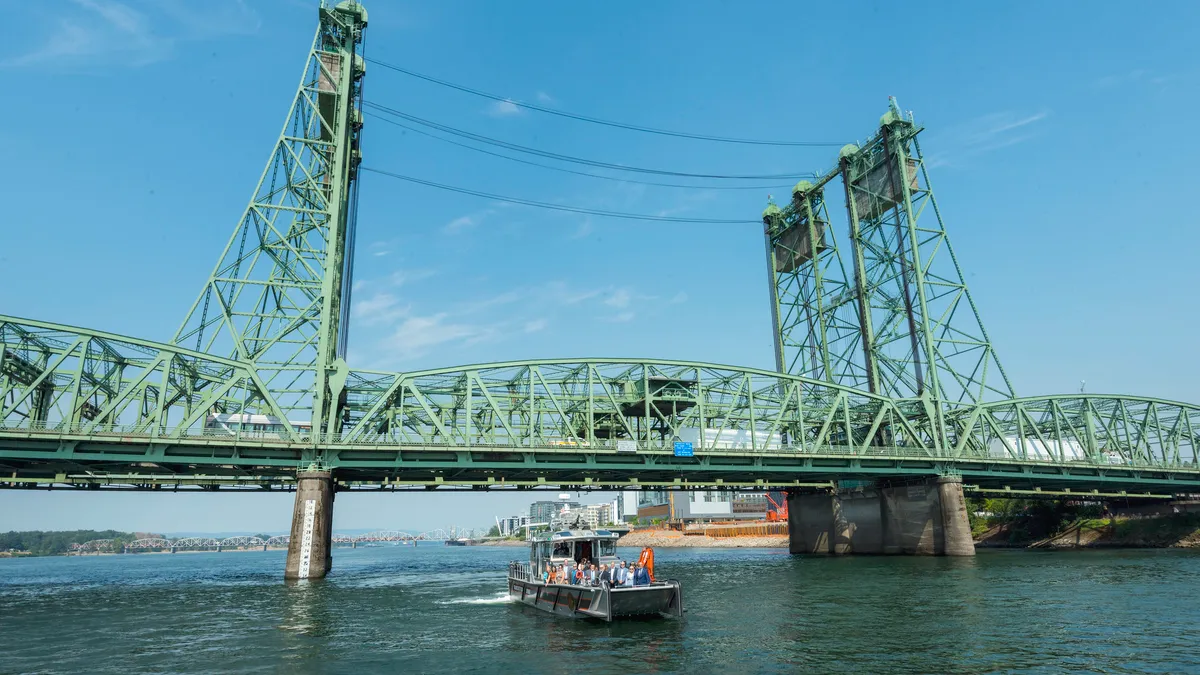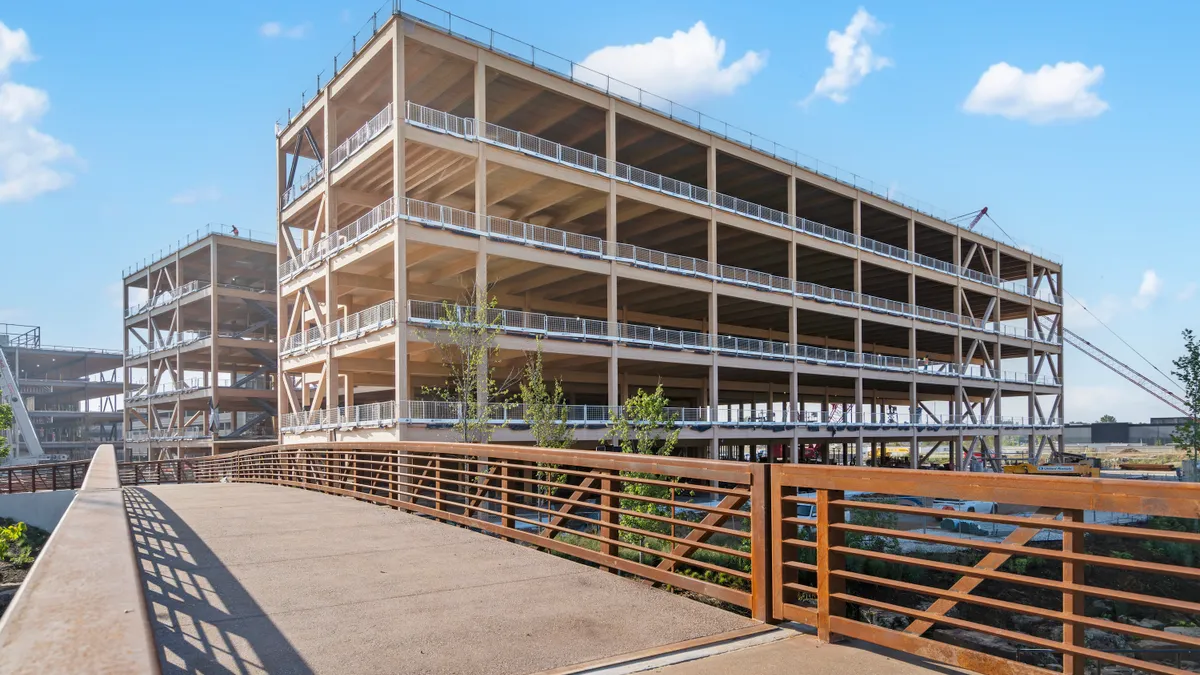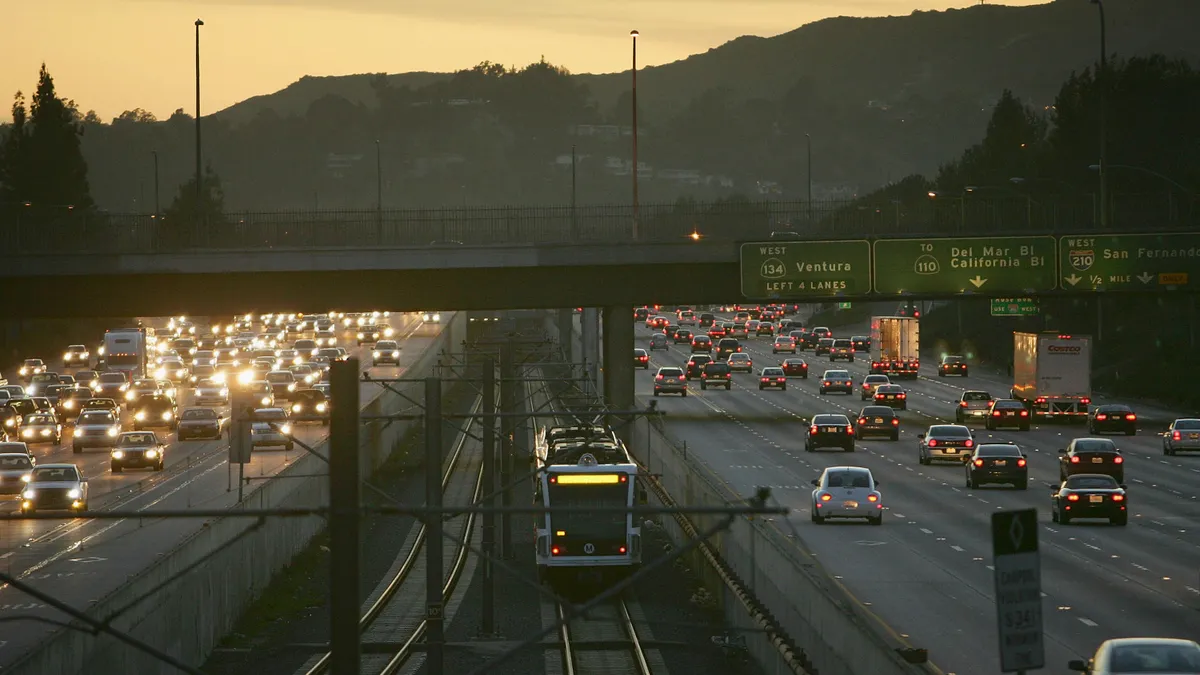The construction industry faces a shifting landscape as the Trump administration sets about reshaping some of the country’s most impactful federal policies.
With changes in infrastructure priorities, regulatory rollbacks and economic shifts, contractors and developers are bracing for both new opportunities and potential setbacks. Some sectors, such as data centers and infrastructure, are set for rapid growth, while clean energy projects and high-speed rail could see federal support dwindle. Other types of projects have a mixed or uncertain outlook under the new administration.
Below, Construction Dive looks at the sectors poised to lose momentum under Trump’s second term. Click here for the sectors that are poised to gain momentum.
Wind, solar energy
Trump’s Unleashing American Energy order seeks to accelerate power projects but notably leaves out the burgeoning solar and wind sectors, which together comprise about 14% of the country’s power supply, according to the Energy Information Administration.
Trump’s ire has long been directed at wind power in particular, even though the biggest producers are red states, per the EIA. To that end he signed a standalone executive order temporarily suspending new or renewed leases for offshore and onshore wind projects, and halted the leasing of wind power projects on the outer continental shelf, pending a review by federal agencies.
Among the major open questions around the order is whether projects that have already received permits are in jeopardy, according to Grist. For example, it has halted development of the 100,000-acre Lava Ridge Wind project in Idaho, the Idaho Capital Sun reported.
The order also directs the administration’s pick for Secretary of the Interior, former North Dakota governor Doug Burgum, to lead a comprehensive assessment of federal wind leasing and permitting practices. As of 2023, wind generated 36% of North Dakota’s power, according to the U.S. Energy Information Administration. Despite the order, many renewable energy giants seemed to shrug off Trump’s actions, CNBC reported.
It’s tough to tell what will happen with solar energy. New solar projects could be hit hard by tariffs from China, a crucial source of parts, according to Politico. Still, wind, solar and other clean energy projects could all be sped along if Trump weakens environmental laws to speed construction permitting.
“In discussions with construction clients and industry leaders, there is a general consensus that both ‘traditional’ energy sources and ‘greener’ energy have roles in play in the broader energy landscape,” said Kassalen.
High-speed rail
Passenger and high-speed rail projects supported through the Biden administration could get reduced federal support under Trump, according to Holland and Knight. Additionally, public transit systems, which rely on federal funding, could struggle to secure the money needed to expand their systems due to cuts in discretionary transportation funding.
IIJA funding for rail projects could be affected in particular, Holland and Knight experts wrote.
“The administration and congressional Republicans may attempt to offset annual passenger rail funding using advanced appropriations provided by the IIJA, which included $66 billion in advanced appropriations for rail projects,” according to the brief.
EV and battery factories
Trump’s hostile attitude toward EVs does not appear to have softened after welcoming Tesla CEO Elon Musk onto his team: His Day 1 energy order directs agencies to eliminate the “electric vehicle (EV) mandate.” It specifically targets IIJA funds for electric vehicle charging stations through the National Electric Vehicle Infrastructure Formula Program and the Charging and Fueling Infrastructure Discretionary Grant Program, together worth $7.5 billion.
Although Trump wants to halt the disbursement of unspent funds from those programs, legal experts say that he probably doesn’t have the power to. Doing so would likely violate the Impoundment Act, which prevents presidents from blocking spending that Congress has appropriated, according to CNN. However, Trump has used his power to rescind Biden’s executive order that called for half of all new vehicles sold to be electric by 2030.
However, U.S. automakers are too committed to EVs — and to building plants that make them and their batteries — to pull back completely, no matter what changes Trump is able to implement, per CNN. Although IIJA projects are on hold, EV money is in the pipeline: Biden announced an additional $635 million for refueling projects on Jan. 10 before leaving office, following $521 million in grants in August 2024.
Water
Water infrastructure continues to be an area of concern across the country, as burgeoning cities and megaprojects like data center campuses seek to slake their thirst. Although the Trump administration has championed data centers, it has said little about the vast amounts of water required to run them.
If his past actions are an indication of future plans, Trump will seek to roll back the Clean Water Act and leave regulation of smaller waterways to states, according to The New York Times. Previously, the president also directed federal funding to rural water and wastewater infrastructure projects.
During his first term, the Trump administration studied the issue of per- and polyfluoroalkyl substances, or PFAS, in drinking water and his EPA was generally in favor of regulation, according to WaterWorld. Megacontractors like Jacobs and AECOM have claimed more PFAS cleanup work in recent years. However, Trump’s Jan. 20 order, Regulatory Freeze Pending Review, halted any proposed rules that have been sent to the Office of the Federal Register, including a Biden administration proposal to set limits on PFAS in effluent with discharge limits.
For the moment, water projects funded by the IIJA could have trouble receiving funds, but because water infrastructure initiatives do not appear to conflict with Trump’s policy objectives, “EPA seemingly retains the power to move ahead with disbursement of the IIJA-appropriated SRF dollars unfettered,” the Association of Metropolitan Water Agencies said in a Jan. 27 briefing.























